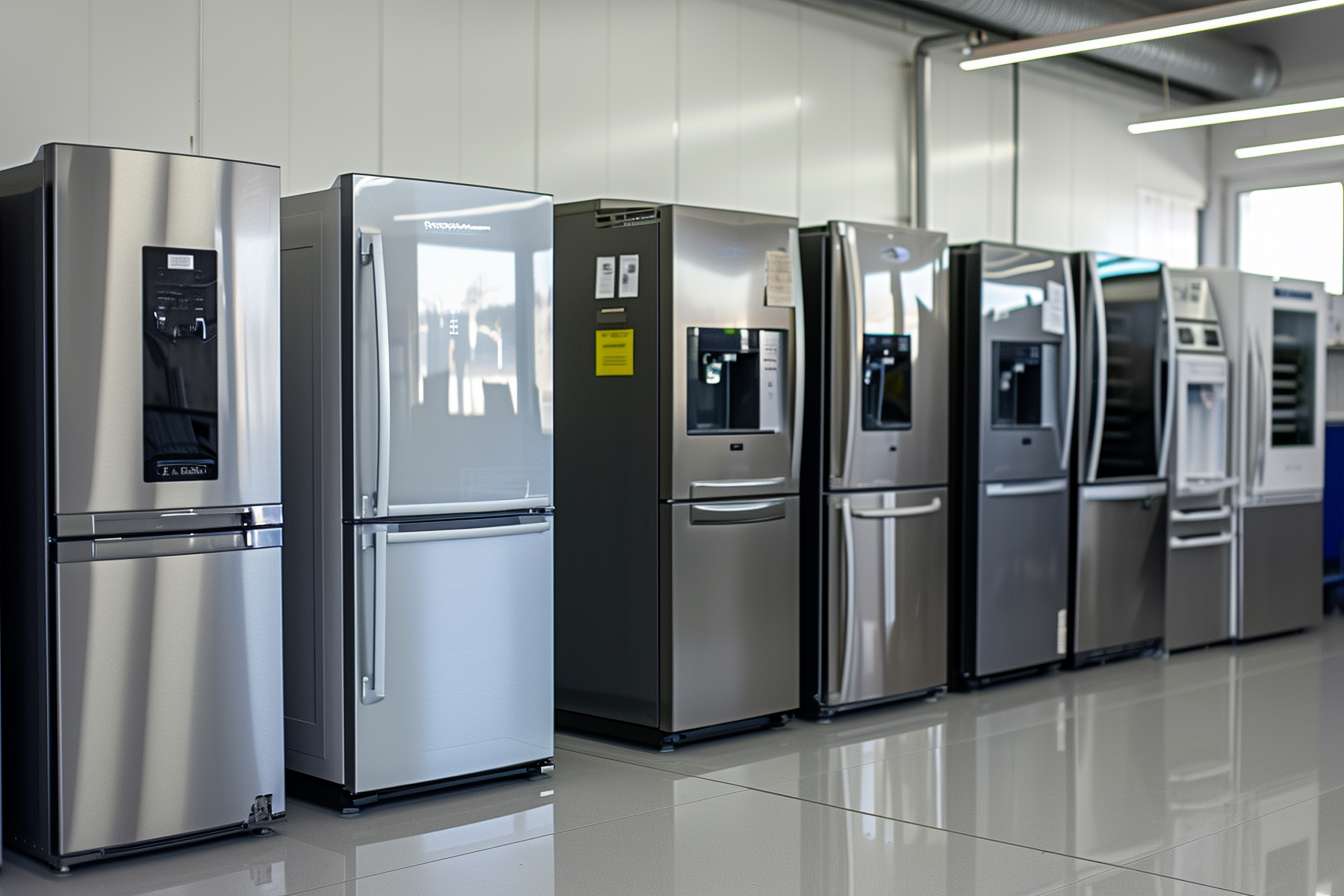The Uses of Refrigerators
The basic function of a refrigerator is to keep food fresh. By lowering the temperature, it inhibits the growth of bacteria and microorganisms, slowing the spoilage process. This allows us to store our food longer, reducing waste and ensuring food safety. Modern refrigerators are typically divided into a refrigerator and freezer compartment, and some even have a variable temperature function.

Refrigerators have become indispensable appliances in modern homes, businesses, and institutions worldwide. These cooling devices have evolved significantly from their early iterations, now offering various features beyond basic food preservation. Today’s refrigerators provide solutions for different storage needs while helping maintain food safety and freshness. Understanding the diverse applications and types available can help consumers make informed decisions when selecting these essential appliances for their specific requirements.
Food Preservation and Safety
The primary function of refrigerators remains food preservation. By maintaining temperatures between 35-38°F (1.7-3.3°C), refrigerators significantly slow bacterial growth that causes food spoilage. This preservation capability extends the shelf life of perishable items like dairy products, meats, fruits, and vegetables. Modern refrigerators, including many KitchenAid refrigerator models, feature specialized drawers with adjustable humidity controls that create optimal environments for different food types.
Food safety represents another crucial aspect of refrigeration. The consistent cold temperature helps prevent foodborne illnesses by inhibiting the multiplication of harmful bacteria. Many contemporary refrigerators include temperature monitoring systems that alert users when internal temperatures rise above safe levels, ensuring food remains properly stored even during power fluctuations or door-ajar situations.
Commercial Applications
Commercial refrigerators serve essential functions across various industries. In restaurants, commercial refrigerator units provide large-capacity storage for ingredients, prepared foods, and beverages. These specialized units often feature glass doors for easy inventory management and rapid access during busy service periods. Food service establishments typically utilize reach-in refrigerators, walk-in coolers, and under-counter units to accommodate different operational needs.
Retail businesses like grocery stores, convenience stores, and specialty food shops rely on commercial refrigeration for product display and preservation. These units often incorporate merchandising features such as LED lighting, transparent doors, and branded graphics to enhance product visibility and appeal. Healthcare facilities and laboratories utilize specialized commercial refrigeration for storing medications, vaccines, biological samples, and other temperature-sensitive materials that require precise environmental control.
Customization and Design Integration
Modern refrigerators have evolved beyond pure functionality to become design elements within homes. The Samsung Bespoke fridge exemplifies this trend with its modular design and customizable panels available in various colors and finishes. This approach allows homeowners to integrate refrigeration seamlessly into their kitchen aesthetic or make a bold design statement. Panel-ready refrigerators can be fitted with cabinet-matching fronts for a built-in appearance that blends with surrounding cabinetry.
Beyond aesthetics, customization extends to configuration options. French door, side-by-side, bottom-freezer, and column refrigerators offer different arrangements to suit various kitchen layouts and user preferences. Smart refrigerators incorporate touchscreens, cameras, and connectivity features that integrate with home automation systems while providing recipe suggestions, grocery management, and entertainment functions.
Specialized Storage Solutions
Many refrigerators now include specialized zones designed for specific storage needs. Wine refrigerators maintain optimal temperatures and humidity levels for proper wine storage, with some models offering dual temperature zones for red and white wines. Beverage centers feature adjustable shelving configured for cans and bottles, often with glass doors for easy viewing of contents.
Drawer refrigerators provide accessible storage in kitchen islands or under counters, offering supplemental cooling capacity without requiring a full-sized unit. Outdoor refrigerators constructed with weather-resistant materials and enhanced insulation withstand temperature fluctuations and exposure to elements, making them suitable for patios, pool areas, and outdoor kitchens. Home Depot refrigerators often include various specialized models to address these specific storage requirements.
Energy Efficiency and Sustainability
Modern refrigerators have made significant advances in energy efficiency compared to older models. ENERGY STAR certified refrigerators consume approximately 9% less energy than standard models, resulting in lower utility bills and reduced environmental impact. Many manufacturers, including KitchenAid and Samsung, have prioritized efficiency improvements through better insulation, more effective compressors, and intelligent cooling systems that adjust operation based on usage patterns.
Sustainability features extend beyond energy consumption to include environmentally friendly refrigerants that minimize ozone depletion and global warming potential. Some manufacturers have implemented recycled materials in refrigerator components and developed more sustainable manufacturing processes. Smart diagnostic systems help maintain optimal performance while extending appliance lifespan through preventive maintenance alerts.
Cost Considerations and Popular Models
Refrigerator prices vary significantly based on size, features, and brand. Basic top-freezer models offer economical cooling solutions, while feature-rich French door refrigerators with smart technology command premium prices. The table below provides a general overview of common refrigerator types and their approximate price ranges:
| Refrigerator Type | Representative Models | Approximate Price Range |
|---|---|---|
| Top-Freezer | Home Depot Whirlpool 18 cu. ft. | $600-$1,200 |
| Bottom-Freezer | KitchenAid KRBR109ESS | $1,500-$2,500 |
| Side-by-Side | Samsung RS27T5200 | $1,200-$3,000 |
| French Door | KitchenAid KRFC300ESS | $1,800-$4,000+ |
| Column/Built-in | Samsung Bespoke 4-Door | $2,500-$10,000+ |
| Commercial | True T-49 | $3,000-$15,000+ |
Prices, rates, or cost estimates mentioned in this article are based on the latest available information but may change over time. Independent research is advised before making financial decisions.
Home Depot refrigerators span multiple price points and include various brands beyond their house labels. KitchenAid refrigerator models typically position in the mid-to-premium segment with emphasis on build quality and specialized features. The Samsung Bespoke fridge line represents a premium offering with customization options that affect final pricing. Commercial refrigerator units generally command higher prices due to their enhanced durability, capacity, and specialized cooling systems.
Additional Applications
Beyond typical kitchen and commercial uses, refrigerators serve various specialized applications. In agriculture, cold storage facilities preserve harvested crops and extend market availability. Medical facilities utilize pharmaceutical refrigerators with precise temperature controls for storing medications and vaccines. Scientific research relies on laboratory refrigerators and ultra-low temperature freezers for preserving samples and reagents.
Refrigeration technology also plays a vital role in transportation, with refrigerated trucks, containers, and railway cars maintaining cold chains for food distribution globally. Some specialized refrigeration systems serve industrial processes, including computer server cooling, chemical manufacturing, and food production. These diverse applications demonstrate how refrigeration technology extends far beyond household convenience to support critical infrastructure across multiple sectors.




